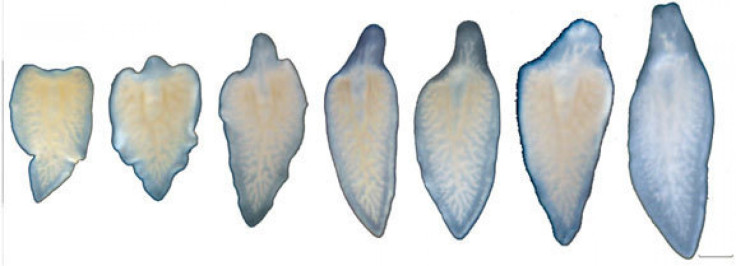Flatworms Can Regrow New Heads, New Gene Saves 1 Million-Year-Old Regeneration Process [PHOTO]

In an unusual experiment, German researchers have successfully tinkered with flatworms so they can regrow a functional head anywhere on their bodies. The heads, equipped with a brain, eyes and all the necessary wiring, show how the loss of body parts may be reversed in some species.
"We thought we would have to manipulate hundreds of different switches to repair a regeneration defect; now we learned that sometimes only a few nodes may do," Jochen Rink, who led the study by the Max Planck Institute, said in a statement.
Researchers activated a single gene that flatworms use to regenerate body parts in order to restore their ability to grow new heads. While Mexican salamanders and zebrafish also have the ability to regenerate lost body parts and organs, this is the first time researchers discovered a molecular switch that can decide whether a flatworm can regrow its head or not.
"We can cut the worm to 200 pieces, and 200 new worms will regenerate from each and every piece," Rink said about the flatworm species Schmidtea mediterranea, a popular species used in studies about regeneration. Instead, researchers used the flatworm’s close cousin, Dendrocoelum lacteum, and altered its genetic circuitry to allow it to regrow a functional head anywhere on its body, even if it was cut at the tip of its tail.
Scientists were stunned. “I was shocked,” University of San Francisco assistant biology professor James Sikes told WBUR radio. “It was a very surprising finding that one gene can rescue a regeneration process that was lost millions of years ago.”
Making this happen was pretty easy, scientists said. "In order to induce this process artificially, you might think you would have to twiddle a hundred knobs at the same time — but you may have to only twiddle a few knobs," Rink told LiveScience.
With a second head in place, each head controls one half of the body. It’s also possible to make a worm with two tails and no head, Rink said.
Flatworms are a group of soft-bodied invertebrates that are usually parasitic. The water-dwelling creatures lack respiratory, skeletal and circulatory systems and any form of body cavities.
While imitating the process in humans may be far away, Rink says the study made an “important first step” toward understanding why some animals regenerate while others don’t.
"Exploring how we can translate principles derived from these studies to those of mammalian regeneration would be interesting and may eventually be beneficial for development of regenerative medicine [in humans]," Mayumi Ito, a professor of dermatology at NYU School of Medicine who was not involved with the studies, told Live Science.
© Copyright IBTimes 2024. All rights reserved.












